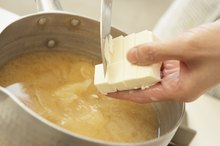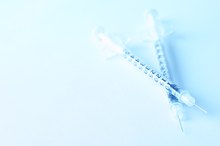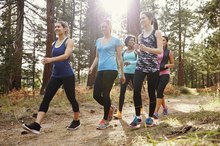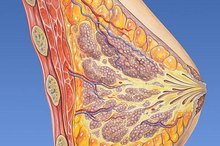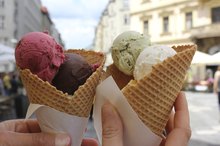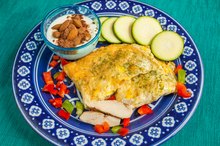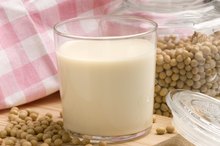Can You Increase Breast Size With Diet?
Breast size is largely determined by genetic predisposition and hormonal fluctuations throughout life. Using dietary modifications can help to increase your breast size slightly and may be enough of a change to please you 1. Changing your diet is a safer and cheaper alternative to choosing breast enhancing surgery. Eating a diet rich in healthy fats will cause you to gain some weight, which can increase the size of the breasts naturally.
Increase your intake of healthy fats and oils. Eating a diet that consists of healthy fats could help you gain weight. Because breasts are made of fat and muscle tissues, increasing the ratio of fat in the body will increase breast size. Unfortunately, you can not choose where the fat in the body will go so you may find an increase in the size of your hips, thighs and waist as well as in the breasts. Healthy fats include avocado and avocado oil, olives and olive oil, nuts, seeds and oily fish such as herring.
Ways to Naturally Stimulate Breast Growth
Learn More
Eat soy products. Soy beans contain a high concentration of phytoestrogens, which mimic the properties of estrogen in the body. Estrogen is responsible for plumping the breasts during the menstrual cycle. Choose soy-based products such as soybeans, edamame, soy milk and fake meat products.
Choose vegetables and fruits rich in phytoestrogens. Although soy products have the highest concentration of phytoestrogens, you can still find lower concentration in fruits and veggies such as carrots, beets, cherries and yams.
Benefits of Soy Protein for Breast Growth
Learn More
Use herbs 2. Add herbs to your diet either through cooking or in pill form. Herbs such as wild yam, chasteberry and fenugreek contain both phytoestrogens and properties that help retrain healthy breast tissues 2.
Warnings
Always consult with a doctor before significantly changing your diet or using herbal remedies.
Related Articles
References
- Your Natural Wellness: Foods to Increase Your Breast Size
- Green Bush: Breast Herbs
- Winocour S, Lemaine V. Hypoplastic Breast Anomalies in the Female Adolescent Breast. Semin Plast Surg. 2013;27(1):42–48. doi:10.1055/s-0033-1343996
- Cruz NI. Breast Asymmetry in Women Requesting Plastic Surgery of the Breast. P R Health Sci J. 2018;37(4):230‐238.
- Chen JH, Chan S, Yeh DC, Fwu PT, Lin M, Su MY. Response of bilateral breasts to the endogenous hormonal fluctuation in a menstrual cycle evaluated using 3D MRI. Magn Reson Imaging. 2013;31(4):538-44. doi:10.1016/j.mri.2012.10.022
- Kader T, Hill P, Rakha EA, Campbell IG, Gorringe KL. Atypical ductal hyperplasia: update on diagnosis, management, and molecular landscape. Breast Cancer Res. 2018;20(1):39. doi:10.1186/s13058-018-0967-1
- Hisham A. Juvenile Breast Hypertrophy: A Successful Breast Reduction of 14.9% Body Weight without Recurrence in a 5-Year Follow-Up. Case Rep Surg. Volume 2017, Article ID 3491012. doi:10.1155/2017/3491012
- Kayar R, Çilengiroğlu ÖV. Breast Volume Asymmetry Value, Ratio, and Cancer Risk. Breast Cancer (Auckl). 2015;9:87-92. doi:10.4137/BCBCR.S32789
- Reilley Ann F. Breast Asymmetry: Classification and Management. Aesthetic Surg J. 2006;26(5):596-600. doi:10.1016/j.asj.2006.07.006
- Cruz NI. Breast Asymmetry in Women Requesting Plastic Surgery of the Breast. PR Health Sci J. 2018 Dec;37(4):230-238.
Writer Bio
Nicole Carlin is a registered yoga teacher. Her writing has been published in yoga and dance teacher training manuals for POP Fizz Academy. Carlin received a Masters of Arts in gender studies from Birkbeck University in London and a Bachelors of Arts in psychology from Temple University, Philadelphia.

